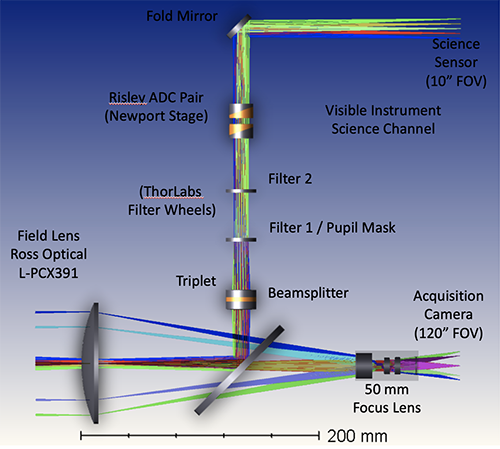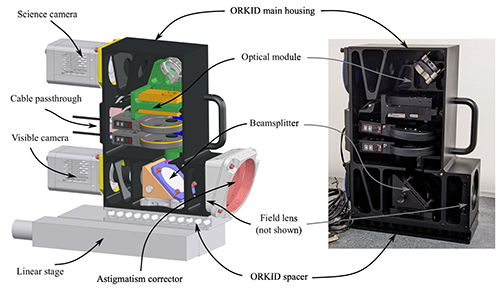ORKID
A new breed of space-ground hybrid observatory, the Orbiting Configurable Artificial Star (ORCAS) mission is working with the W. M. Keck Observatory (WMKO) to demonstrate the viability of diffraction-limited visible imaging from large ground telescopes. To support that, we have built and delivered ORKID (The ORCAS Keck Instrument Demonstrator) as an early visible-wavelength performance demonstration with the Keck II Adaptive Optics (AO) system. By enabling AO and flux calibration observations, the low-cost ORCAS/ORKID mission will deliver highly detailed images to support many scientific advances. A community driven observation plan will provide Great Observatory quality capabilities open to all US observers. These observations will result in unique science for the mission, while also complementing and extending space-borne science.
Key Features:
- Visible band (at least 500-100 nm)
- 6.7 milliarcsec pixels
- Fast Andor camera reads 2 arcsec square in 10 millisec
- Internal wavefront error < 50 nm rms
- Lucky and speckle imaging now, direct imaging after Keck II AO upgrade
- Includes atmospheric dispersion compensator and astigmatism corrector
- Camera integrated into Keck data system, controlled by Python scripts


